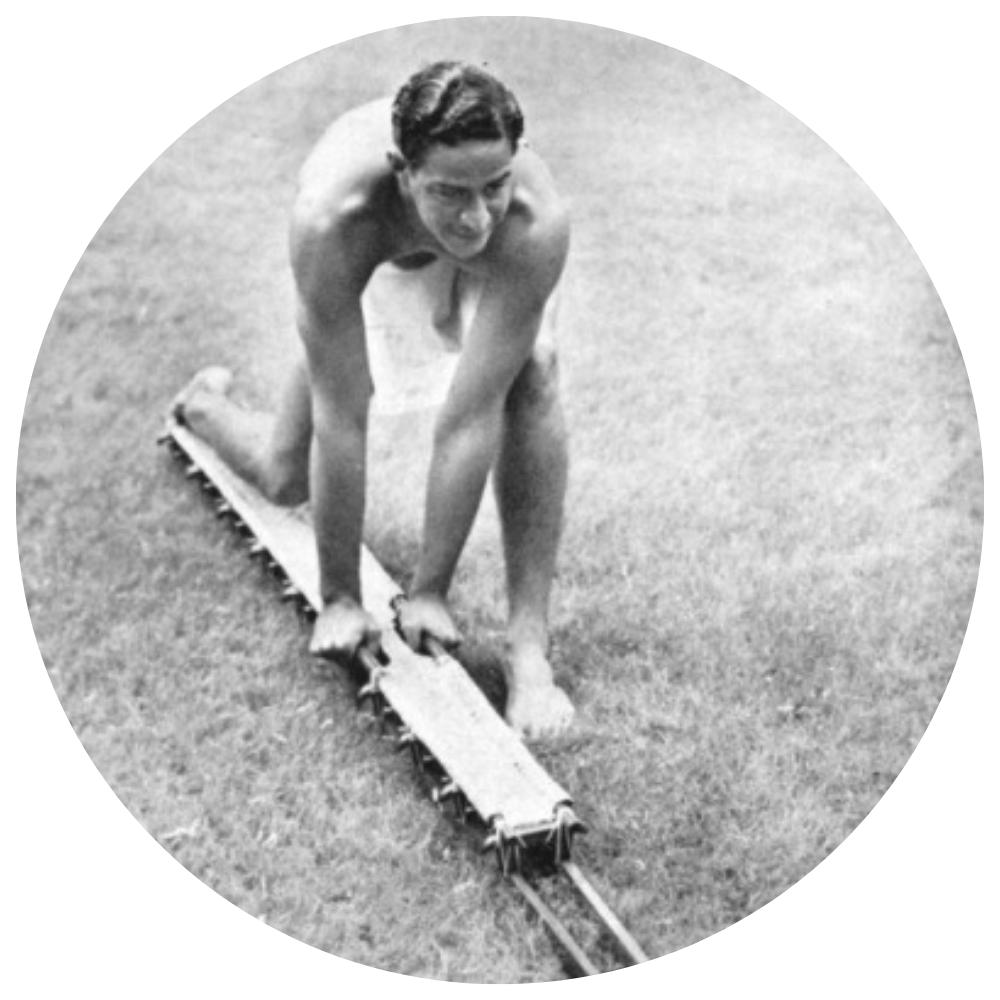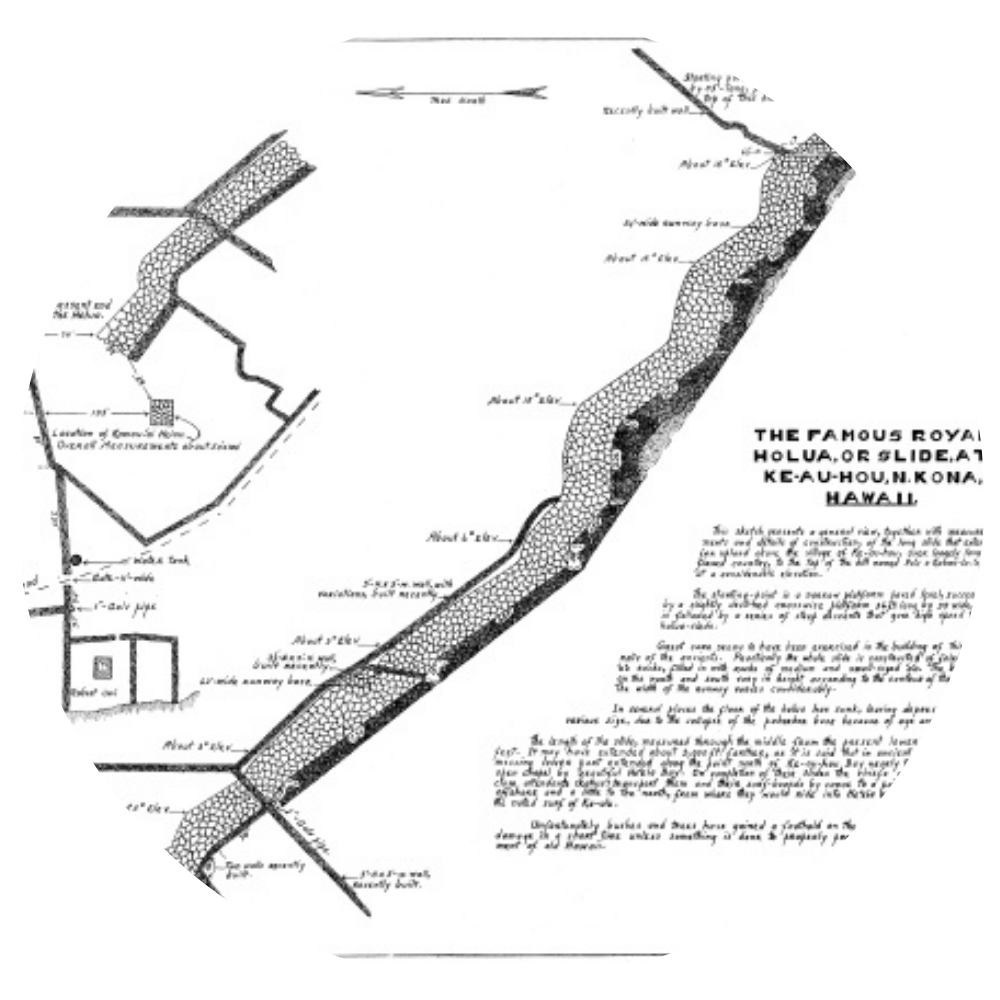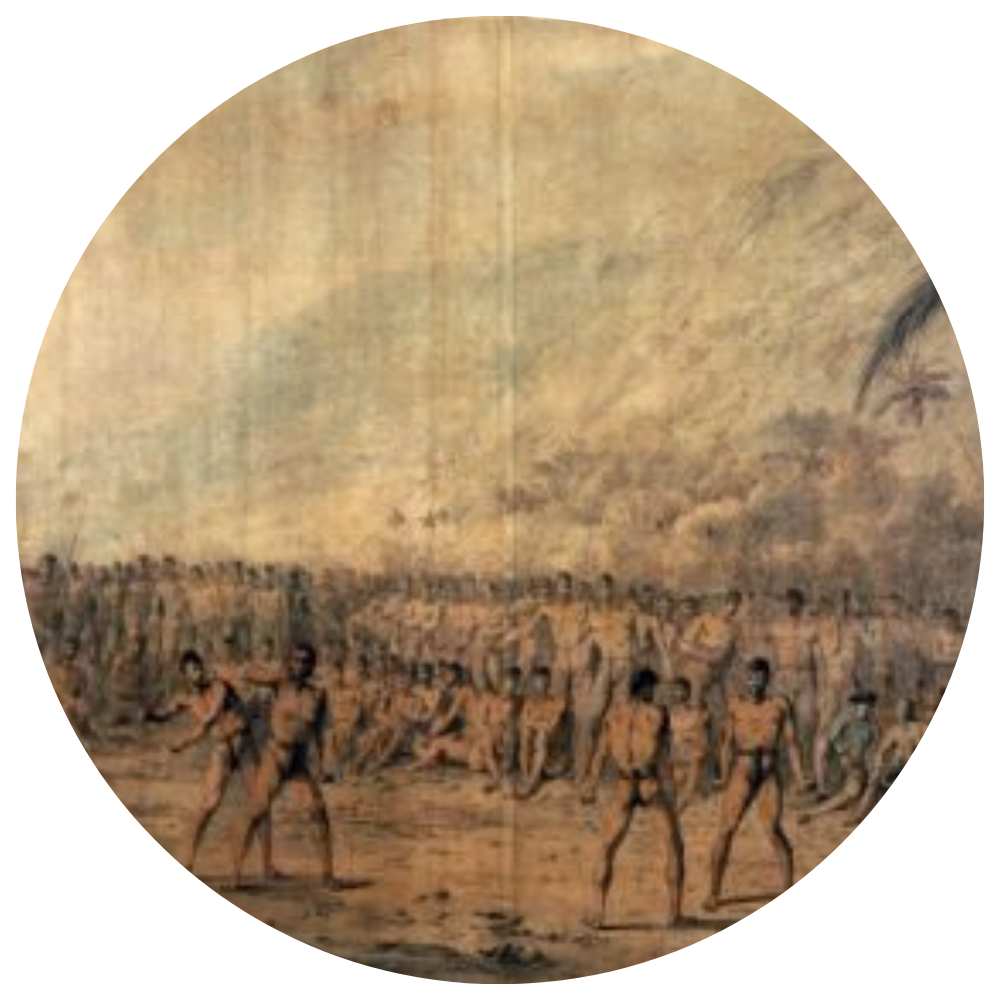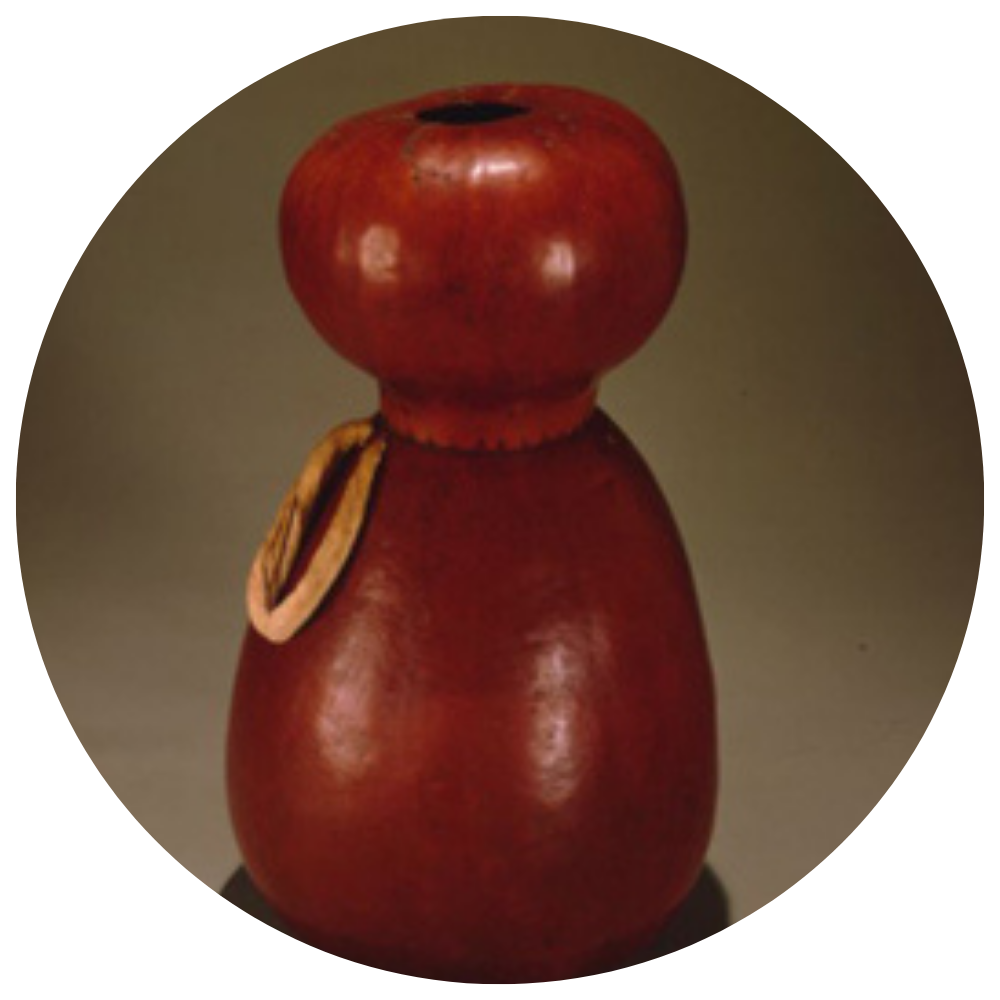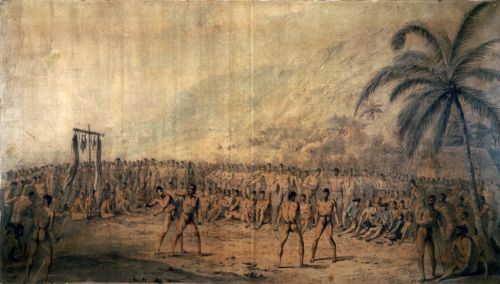Lonoikamakahiki

Papa Hōlua
The rising of the Makali‘i (Pleiades star cluster) in the heavens over Hawai‘i signaled the arrival of the Makahiki season for Kānaka Maoli and a time for renewal, regeneration and celebration. Sport in ancient Hawai‘i not only brought pleasure, excitement and competition, but also built the strength and athleticism that might be needed if the return of Kū called for nā koa (warriors). One particularly exciting and daring pastime among Kānaka Maoli was riding the papa hōlua or hōlua sled. This ancient sport, similar to tobogganing, tested ones balance, strength and courage by hurtling the prone rider, headfirst, down a steep snow-less decline atop a sled that was usually less than twelve inches wide. An article in the Hawaiian-language newspaper Ka Nupepa Kuokoa from 1865 warns:
Ina hoi e kahuli ka papa i ka wa e holo ai, o ka make no ia o ke kanaka i ka niao o ka papa. Ua oleloia mai, ua like ka holo o ka holua me ka holo ana o ka lio holo loa. A ma ia paani, ua lealea loa na kanaka, he eha nae a me ka make ka hope oia hana.*
If indeed the sled flipped over during its running, it would mean the death of the rider by the edge of the sled. It was said that the running of the hōlua is like a fast horse. Much pleasure was brought by this sport though injury and death were sometimes the ending.
Runways for the sleds were usually covered with a bed of stones, which was then topped with a layer of dirt, and finally grass or leaves. The top layer of leaves and the runners of the sleds were sometimes greased with kukui nut oil to increase the speed. Hōlua slides were built in various steep spots throughout the islands. Early writings mention famous slides on the hills behind Kamehameha Schools, throughout Nu‘uanu Valley, Pu‘u ‘Ōhi‘a (Tantalus), Pūowaina (Punchbowl) and atop Kaimana Hill (Diamond Hill). Perhaps the most famous run, preserved in part today as an historic landmark, is the slide at Keauhou, Hawai‘i. Oral histories speak of this slide having been built by Kamehameha I for his son Kauikeaouli who was born at Keauhou.
Several mo‘olelo carry the histories of epic hōlua battles. One story describes a famous fourteenth-century hōlua contest between Pele and Kahawali. This young chief of Puna, well known for his excellence in sledding, defeated Pele and incurred the wrath of the volcano goddess by mocking her.
A revival of things Hawaiian and modern celebrations of the makahiki have brought newfound interest in the sport. A surviving sled from ancient times known as Lonoikamakahiki has been used by modern artisans to construct new sleds that allow a current generation of riders to experience this ancient pastime.
*Ka Nupepa Kuokoa. Kekemapa 23, 1865 page 1-2.
Location: Bishop Museum
Collection: Hawaiian National Museum Collection
Artifact Number: 00320


